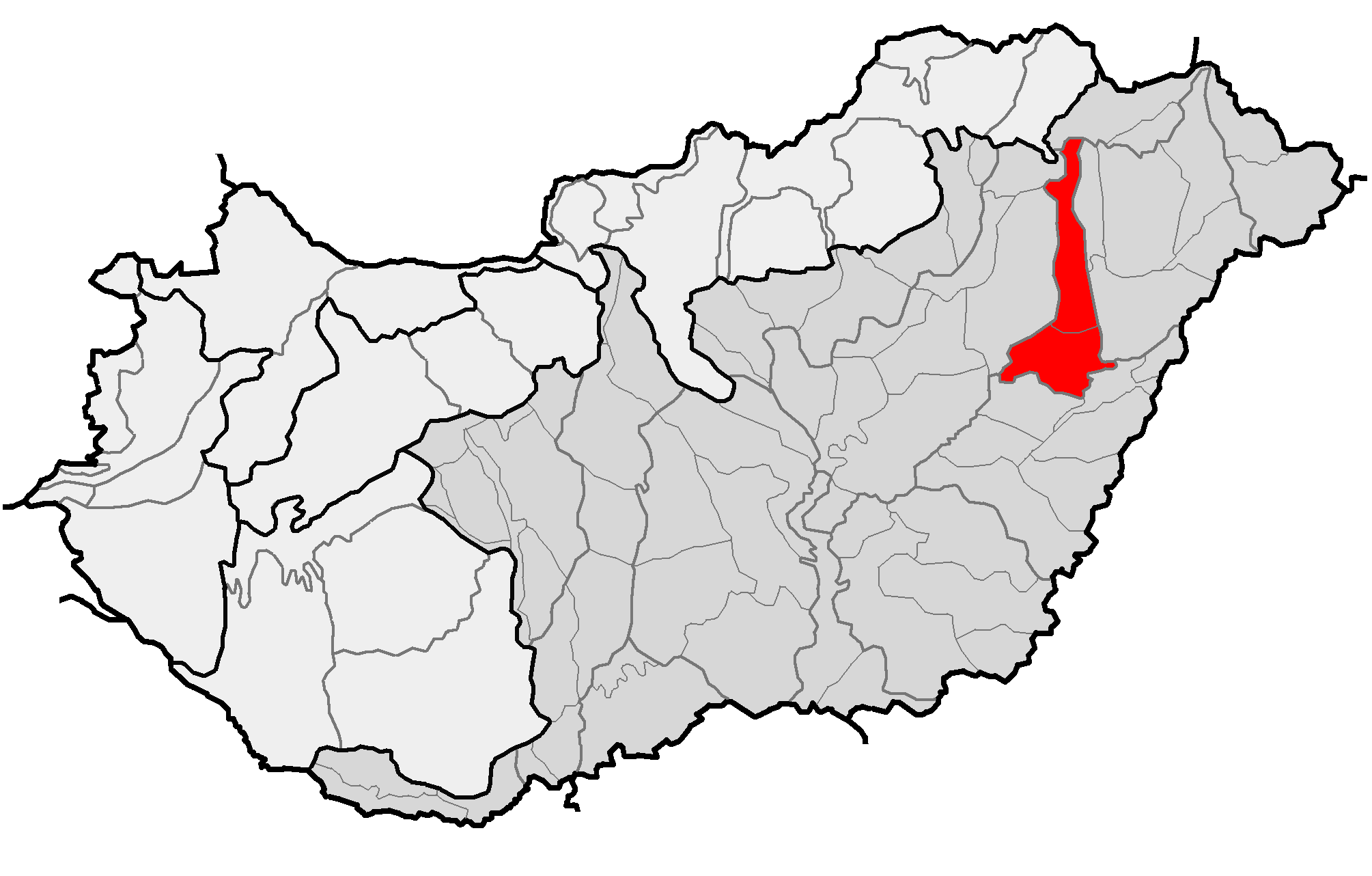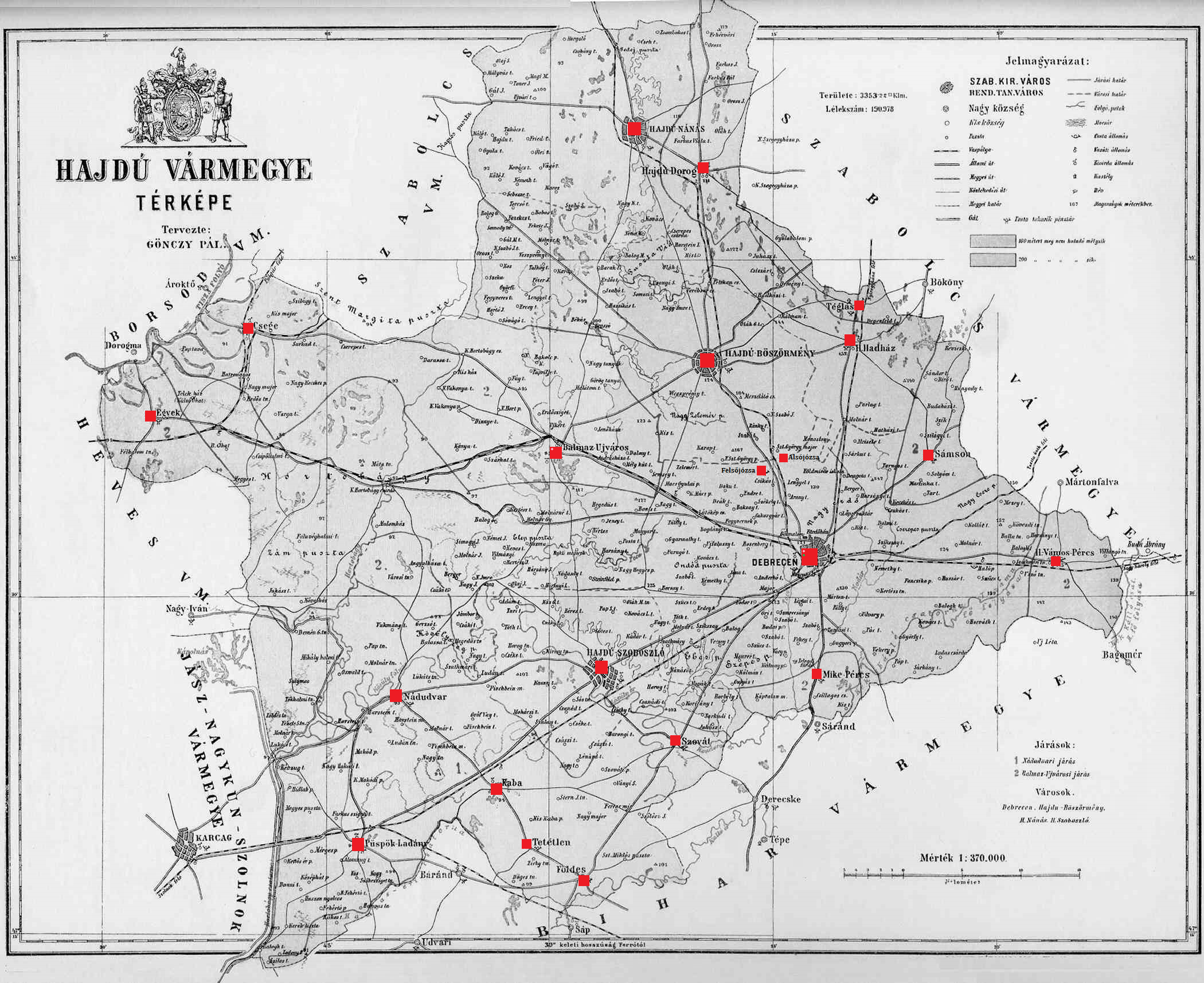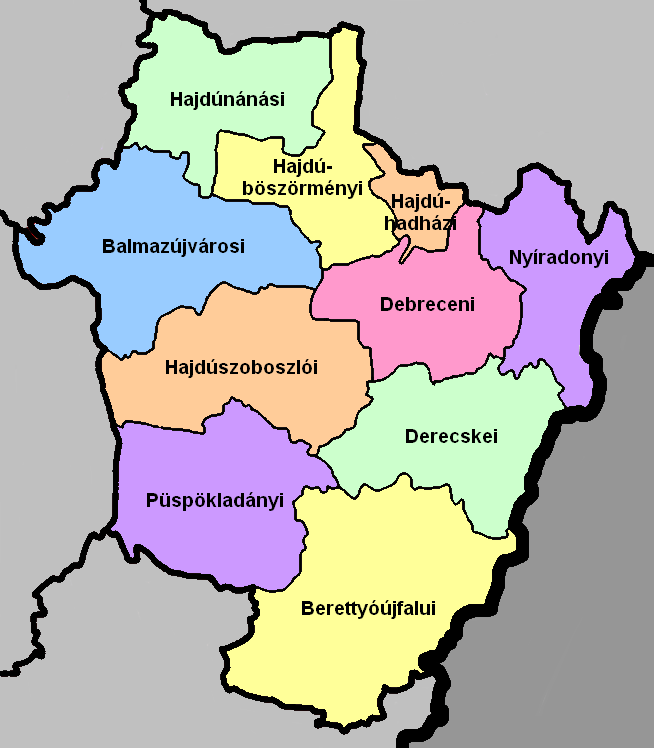|
Hajdúság
Hajdúság is a historical and geographical region in Hungary, located in the Great Hungarian Plain around Debrecen. It consists of six ''hajdú towns'' ( hu, hajdúvárosok), named Hajdúböszörmény, Hajdúdorog, Hajdúnánás, Hajdúhadház, Hajdúszoboszló and Vámospércs. History The region was established by István Bocskai in the 17th century, who invited Hajdús to his domains. Hajdús were Hungarian mercenary soldiers, mercantiles and cattle drovers in the Great Hungarian Plain, during the Ottoman wartimes Hungarian peasants also joined to the group. After settling down they got collective nobility. It was an autonomous region ( hu, Hajdúkerület, means "Hajdú District") until 1876 when it became part of Hajdú County (now Hajdú-Bihar County Hajdú-Bihar ( hu, Hajdú-Bihar megye, ) is an administrative county (comitatus or megye) in eastern Hungary, on the border with Romania. It shares borders with the Hungarian counties Szabolcs-Szatmár-Bereg, Bors ... [...More Info...] [...Related Items...] OR: [Wikipedia] [Google] [Baidu] |
Hajdú County
Hajdú, formerly known as Hajdúság, was an administrative county (comitatus) of the Kingdom of Hungary. The capital of the county was Debrecen. The territory of the county is now part of the Hungarian county Hajdú-Bihar. Geography Hajdú county shared borders with the counties Heves, Borsod, Szabolcs, Bihar, Békés and Jász-Nagykun-Szolnok. The river Tisza touched its western border. The Hortobágy National Park steppe lies in the county. Its area was 3343 km² around 1910. History The Hajdúság region had a special status in the Kingdom of Hungary, but was turned into the proper county Hajdú in the 19th century. At the 1950 county reform, it was merged with Bihar County (the Hungarian part of pre- Trianon Bihar County) and some smaller parts of the former Szabolcs County to form Hajdú-Bihar County, with its capital at Debrecen Debrecen ( , is Hungary's second-largest city, after Budapest, the regional centre of the Northern Great Plain region and the seat o ... [...More Info...] [...Related Items...] OR: [Wikipedia] [Google] [Baidu] |
Great Hungarian Plain
The Great Hungarian Plain (also known as Alföld or Great Alföld, hu, Alföld or ) is a plain occupying the majority of the modern territory of Hungary. It is the largest part of the wider Pannonian Plain. (However, the Great Hungarian plain was not part of the ancient Roman province Pannonia). Its territory significantly shrank due to its eastern and southern boundaries being rewritten by the new political borders created after World War I when the Treaty of Trianon was signed in 1920. Boundaries Its boundaries are the Carpathians in the north and east, the Transdanubian Mountains and the Dinaric Alps in the southwest, and approximately the Sava river in the south. Geography Plain in Hungary Its territory covers approximately of Hungary, approximately 56% of its total area of . The highest point of the plain is Hoportyó (); the lowest point is the Tisza River. The terrain ranges from flat to rolling plains. The most important Hungarian writers inspired by and ... [...More Info...] [...Related Items...] OR: [Wikipedia] [Google] [Baidu] |
István Bocskai
Stephen Bocskai or Bocskay ( hu, Bocskai István; 1 January 155729 December 1606) was Prince of Transylvania and Hungary from 1605 to 1606. He was born to a Hungarian noble family. His father's estates were located in the eastern regions of the medieval Kingdom of Hungary, which developed into the Principality of Transylvania in the 1570s. He spent his youth in the court of the Holy Roman Emperor, Maximilian, who was also the ruler of Royal Hungary (the western and northern regions of the medieval kingdom). Bocskai's career started when his underage nephew, Sigismund Báthory, became the ruler of Transylvania in 1581. After the Diet of Transylvania declared Sigismund of age in 1588, Bocskai was one of the few members of Sigismund's council who supported his plan to join an anti-Ottoman coalition. Sigismund made Bocskai captain of Várad (now Oradea in Romania) in 1592. After the pro-Ottoman noblemen forced Sigismund to renounce his throne in 1594, Bocskai supported him in ... [...More Info...] [...Related Items...] OR: [Wikipedia] [Google] [Baidu] |
HU Mesoregion 1
HU or Hu may refer to: Arts and entertainment * Hu Sanniang, a fictional character in the ''Water Margin'', one of the Four Great Classical Novels of Chinese literature * Tian Hu, one of the antagonists in the ''Water Margin'' * Hollywood Undead, an American rap rock band * The Hu, a Mongolian heavy metal band Language * Hu (digraph), used primarily in Classical Nahuatl * Fu (kana), also romanised as Hu, Japanese kana ふ and フ * Hu language, of Yunnan, China * Hungarian language (ISO 639 alpha-2 code 'hu') Mythology and religion * Hu (mythology), the deification of the first word in the Egyptian mythology of the Ennead * Huh (god), the deification of eternity in the Egyptian mythology of the Ogdoad * Hu (Sufism), a name for God * Hu (ritual baton), an early Chinese writing utensil later used in Daoist rituals * Hú, a kachina in Hopi mythology * Adir Hu, a hymn sung at the Passover Seder * Hu Gadarn (or Hu the Mighty), a Welsh legendary figure * HU, a mantra populariz ... [...More Info...] [...Related Items...] OR: [Wikipedia] [Google] [Baidu] |
Soldier
A soldier is a person who is a member of an army. A soldier can be a conscripted or volunteer enlisted person, a non-commissioned officer, or an officer. Etymology The word ''soldier'' derives from the Middle English word , from Old French or , meaning mercenary, from , meaning shilling's worth or wage, from or , shilling. The word is also related to the Medieval Latin , meaning soldier (literally, "one having pay"). These words ultimately derive from the Late Latin word , referring to an Ancient Roman coin used in the Byzantine Empire. Occupational designations In most armies use of the word "soldier" has taken on a more general meaning due to the increasing specialization of military occupations that require different areas of knowledge and skill-sets. As a result, "soldiers" are referred to by names or ranks which reflect an individual's military occupation specialty arm, service, or branch of military employment, their type of unit, or operational employment or technic ... [...More Info...] [...Related Items...] OR: [Wikipedia] [Google] [Baidu] |
Historical Regions In Hungary
History (derived ) is the systematic study and the documentation of the human activity. The time period of event before the invention of writing systems is considered prehistory. "History" is an umbrella term comprising past events as well as the memory, discovery, collection, organization, presentation, and interpretation of these events. Historians seek knowledge of the past using historical sources such as written documents, oral accounts, art and material artifacts, and ecological markers. History is not complete and still has debatable mysteries. History is also an academic discipline which uses narrative to describe, examine, question, and analyze past events, and investigate their patterns of cause and effect. Historians often debate which narrative best explains an event, as well as the significance of different causes and effects. Historians also debate the nature of history as an end in itself, as well as its usefulness to give perspective on the problems of the p ... [...More Info...] [...Related Items...] OR: [Wikipedia] [Google] [Baidu] |
Hajdú-Bihar County
Hajdú-Bihar ( hu, Hajdú-Bihar megye, ) is an administrative county (comitatus or megye) in eastern Hungary, on the border with Romania. It shares borders with the Hungarian counties Szabolcs-Szatmár-Bereg, Borsod-Abaúj-Zemplén, Jász-Nagykun-Szolnok and Békés. The capital of Hajdú-Bihar county is Debrecen. Together with Bihor County in Romania it constitutes the Biharia Euroregion. Geography The area of the county does not form a geographical unit; it shares several features with the neighbouring areas: from northeast the sand hills of the Nyírség spread over the county borders. The western part is the Hortobágy National Park ("Puszta"), a large flat area of the country. The county of Hajdú-Bihar occupies the eastern part of Hungary. Most of its territory is completely flat and is part of the Pannonian Plain region (called the Grand Plain in the country). The highest point hardly rises over 170.5 metres in the north. It seems that the county slopes to the south bec ... [...More Info...] [...Related Items...] OR: [Wikipedia] [Google] [Baidu] |
Hungarian Nobility
The Hungarian nobility consisted of a privileged group of individuals, most of whom owned landed property, in the Kingdom of Hungary. Initially, a diverse body of people were described as noblemen, but from the late 12th century only high-ranking royal officials were regarded as noble. Most aristocrats claimed ancestry from a late 9th century Magyar leader. Others were descended from foreign knights, and local Slavic chiefs were also integrated in the nobility. Less illustrious individuals, known as castle warriors, also held landed property and served in the royal army. From the 1170s, most privileged laymen called themselves royal servants to emphasize their direct connection to the monarchs. The Golden Bull of 1222 enacted their liberties, especially their tax-exemption and the limitation of their military obligations. From the 1220s, royal servants were associated with the nobility and the highest-ranking officials were known as barons of the realm. Only those ... [...More Info...] [...Related Items...] OR: [Wikipedia] [Google] [Baidu] |
Ottoman Hungary
Ottoman Hungary ( hu, Török hódoltság) was the southern and central parts of what had been the Kingdom of Hungary in the late medieval period, which were conquered and ruled by the Ottoman Empire from 1541 to 1699. The Ottoman rule covered almost the entire region of the Great Hungarian Plain (except the northeastern parts) and Southern Transdanubia. The territory was invaded and annexed to the Ottoman Empire by Sultan Suleiman the Magnificent between 1521 and 1541. The north-western rim of the Hungarian kingdom remained unconquered and recognised members of the House of Habsburg as Kings of Hungary, giving it the name "Royal Hungary". The boundary between the two thereupon became the frontline in the Ottoman–Habsburg wars over the next 150 years. Following the defeat of the Ottomans in the Great Turkish War, most of Ottoman Hungary was ceded to the Habsburgs under the Treaty of Karlowitz in 1699. During the period of Ottoman rule, Hungary was divided for administrativ ... [...More Info...] [...Related Items...] OR: [Wikipedia] [Google] [Baidu] |
Droving
Droving is the practice of walking livestock over long distances. It is a type of herding. Droving stock to market—usually on foot and often with the aid of dogs—has a very long history in the Old World. An owner might entrust an agent to deliver stock to market and bring back the proceeds. There has been droving since people in cities found it necessary to source food from distant supplies. Description Droving is the practice of moving livestock over long distances by walking them " on the hoof". Droving is used for moving large herds over long distances, sometimes several hundred kilometers. It was carried out by shepherds. The earliest written evidence about shepherds and their dogs dates back to the 14th century. Thousands of cattle were moved along the roads of Europe and Great Britain, and later sheep, goats, pigs and even geese and turkeys. The journey from pasture to market, slaughterhouse, or buyer could take anywhere from a few weeks to a few months. The herd mov ... [...More Info...] [...Related Items...] OR: [Wikipedia] [Google] [Baidu] |
Mercantile
Trade involves the transfer of goods and services from one person or entity to another, often in exchange for money. Economists refer to a system or network that allows trade as a market. An early form of trade, barter, saw the direct exchange of goods and services for other goods and services, i.e. trading things without the use of money. Modern traders generally negotiate through a medium of exchange, such as money. As a result, buying can be separated from selling, or earning. The invention of money (and letter of credit, paper money, and non-physical money) greatly simplified and promoted trade. Trade between two traders is called bilateral trade, while trade involving more than two traders is called multilateral trade. In one modern view, trade exists due to specialization and the division of labour, a predominant form of economic activity in which individuals and groups concentrate on a small aspect of production, but use their output in trades for other produc ... [...More Info...] [...Related Items...] OR: [Wikipedia] [Google] [Baidu] |
Hajduk (soldiers)
The ''hajdúk'' (singular ''hajdú'') were irregular or mercenary soldiers of the Kingdom of Hungary in the 16th and 17th centuries. Etymology The Hungarian term ''hajdú'' (''hajdúk'' is the plural) may derive from ''hajtó'' which meant (cattle) drover. In 16th century Hungary, cattle driving was an important and dangerous occupation and drovers traveled armed. Some of them ended up as bandits or retainers in the service of local landowners and many may have become soldiers. In any case, the term hajduk came to be used in the 16th century to describe irregular soldiers. There is probably an etymological link between ''hajdú'' and the Turkish word ''hajdud'' which was used by the Ottomans to describe Hungarian infantry soldiers, though it is not clear whether the word traveled from Hungarian to Turkish or vice versa. History In 1604-1606, István Bocskay, Lord of Bihar, led an insurrection against the Habsburg Emperor, whose army had recently occupied Transylvania and b ... [...More Info...] [...Related Items...] OR: [Wikipedia] [Google] [Baidu] |




.jpg)



